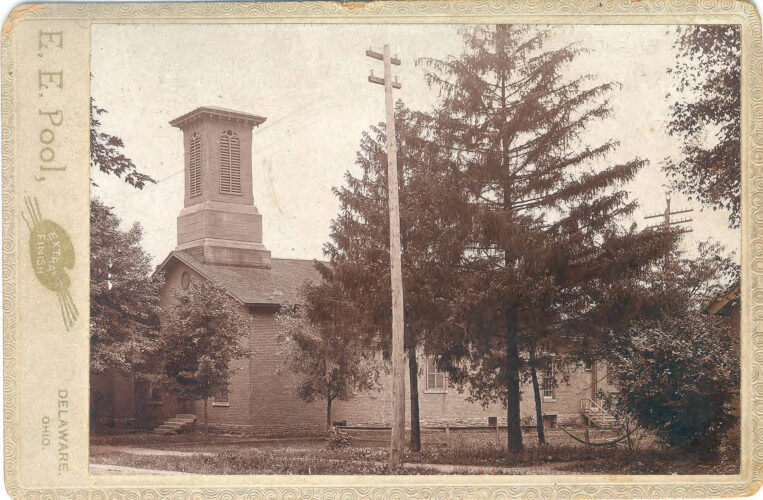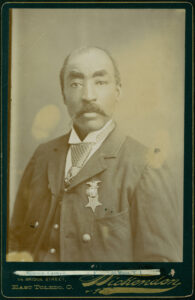Exploring Old Photographs: Cabinet Cards

A few weeks ago we began to explore 19th century photographs by learning some tips for identifying and dating cartes de visite. This week we’ll learn about the popular successor to cartes: cabinet cards.

Cabinet cards were first introduced in 1863 by a photography studio in London, England; they made their way to the US in 1866. Like cartes de visite, cabinet cards were photographic prints mounted on cardstock. However, cabinet cards measured 4 ¼ x 6 ½ inches—roughly three times the size of a carte. While the smaller cartes were designed for sharing and collecting, the larger size of cabinet cards made them suitable for display on a shelf or (not surprisingly) in a cabinet.
Early cabinet cards tended to mimic the straightforward portrait style of cartes de visite. However, photographers gradually realized that the larger format could allow for more creativity. Edward L. Wilson, editor of The Philadelphia Photographer, championed cabinet cards in the hope that they would encourage customers to make more studio visits. Photography studios began to provide decorative backdrops, props, costumes, and sometimes even hair styling and cosmetics, making a visit to the studio a creative and entertaining experience. Skilled studio artists could correct wrinkles and blemishes, add color, and even superimpose images of props if actual props weren’t available. Cabinet cards became not just a way to document someone’s appearance, but to reflect their life.

By the 1880s, cabinet cards were the world’s favorite photographic format, and their popularity continued through the following decade. Here are some tips for dating cabinet cards:
- Most cabinet cards have a sepia-toned image. A true black-and-white image was likely made during or after the 1890s.
- White and cream cards were always popular. Darker card mounts (such as burgundy, dark green, and black) became popular in the 1880s-1890s. Mounts in the 1890s sometimes featured scalloped edges.
- Lettering and decorative elements can also help date a photo. Pre-1880 cabinet cards generally have the photographer’s name printed in plain type below the photo and on the back. From the 1880s forward, the photographer’s name appeared in more ornate text below the photograph, and the back of the card featured increasingly artistic lettering and illustrations. The decoration on the back of the card is called a backmark; printing companies offered customizable options that photographers could select from sample books.
- As always, fashion can be helpful when dating photos; hairstyles and clothing can provide valuable clues.
Although cabinet cards were still produced during the early decades of the 20th century, their popularity declined after 1900—the year Eastman Kodak introduced the Brownie camera. Stay tuned for the third and final installment of this series, which will cover real photo postcards and the rise of amateur photography.
Thank you to Stephanie Michaels, Research and Catalog Services Librarian at the State Library of Ohio, for this week’s post!



Leave a Reply
You must be logged in to post a comment.